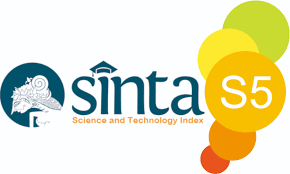Cybernetic Deception: Unraveling the Layers of Email Phishing Threats
Keywords:
Cybersecurity, Email Phishing, Phishing Attacks, ThreatsAbstract
E-mail phishing, a tireless and versatile cybersecurity risk, requires a intensive examination to fortify organizational resistances. This broad survey dives into the multifaceted measurements of e-mail phishing, including mental control strategies, mechanical complexities, and real-world experiences determined from assorted case considers. The investigation of location and anticipation procedures covers a extend of commitments, tending to half breed machine learning approaches, the significance of client instruction, and the part of administrative compliance. These procedures give a significant system for organizations pointing to improve their flexibility against the energetic scene of phishing strategies. The theoretical underscores the administrative landscape's significant part in forming cybersecurity hones, advertising a organized establishment for organizations to adjust with legitimate prerequisites. Expecting future patterns and challenges, such as the integration of characteristic dialect preparing procedures and the complexities of cloud-based phishing assaults, gets to be basic for maintained cyber versatility. In conclusion, this paper serves as a comprehensive direct, enabling people and organizations with the information and methodologies required to explore the complex scene of e-mail phishing dangers. It recognizes the energetic nature of the danger scene, highlighting the progressing travel in combating computerized duplicity and invigorating preparation against the ever-evolving strategies of phishing foes.
References
[2] Aleroud, A., & Zhou, L. (2017). Phishing environments, techniques, and countermeasures: A survey. Computers & Security, 68, 160-196.
[3] Alhogail, A., & Alsabih, A. (2021). Applying machine learning and natural language processing to detect phishing email. Computers & Security, 110, 102414.
[4] Basit, A., Zafar, M., Liu, X., Javed, A. R., Jalil, Z., & Kifayat, K. (2021). A comprehensive survey of AI-enabled phishing attacks detection techniques. Telecommunication Systems, 76, 139-154.
[5] Butt, U. A., Amin, R., Aldabbas, H., Mohan, S., Alouffi, B., & Ahmadian, A. (2023). Cloud-based email phishing attack using machine and deep learning algorithm. Complex & Intelligent Systems, 9(3), 3043-3070.
[6] Che, H., Liu, Q., Zou, L., Yang, H., Zhou, D., & Yu, F. (2017, July). A content-based phishing email detection method. In 2017 IEEE International Conference on Software Quality, Reliability and Security Companion (QRS-C) (pp. 415-422). IEEE.
[7] Fatima, R., Yasin, A., Liu, L., & Wang, J. (2019). How persuasive is a phishing email? A phishing game for phishing awareness. Journal of Computer Security, 27(6), 581-612.
[8] Gangavarapu, T., Jaidhar, C. D., & Chanduka, B. (2020). Applicability of machine learning in spam and phishing email filtering: review and approaches. Artificial Intelligence Review, 53, 5019-5081.
[9] Gupta, B. B., Tewari, A., Jain, A. K., & Agrawal, D. P. (2017). Fighting against phishing attacks: state of the art and future challenges. Neural Computing and Applications, 28, 3629-3654.
[10] Hakim, Z. M., Ebner, N. C., Oliveira, D. S., Getz, S. J., Levin, B. E., Lin, T., ... & Wilson, R. C. (2021). The Phishing Email Suspicion Test (PEST) a lab-based task for evaluating the cognitive mechanisms of phishing detection. Behavior research methods, 53, 1342-1352.
[11] Harikrishnan, N. B., Vinayakumar, R., & Soman, K. P. (2018, March). A machine learning approach towards phishing email detection. In Proceedings of the Anti-Phishing Pilot at ACM International Workshop on Security and Privacy Analytics (IWSPA AP) (Vol. 2013, pp. 455-468).
[12] Karim, A., Azam, S., Shanmugam, B., Kannoorpatti, K., & Alazab, M. (2019). A comprehensive survey for intelligent spam email detection. IEEE Access, 7, 168261-168295.
[13] Li, Q., Cheng, M., Wang, J., & Sun, B. (2020). LSTM based phishing detection for big email data. IEEE transactions on big data, 8(1), 278-288.
[14] Petelka, J., Zou, Y., & Schaub, F. (2019, May). Put your warning where your link is: Improving and evaluating email phishing warnings. In Proceedings of the 2019 CHI conference on human factors in computing systems (pp. 1-15).
[15] Sahingoz, O. K., Buber, E., Demir, O., & Diri, B. (2019). Machine learning based phishing detection from URLs. Expert Systems with Applications, 117, 345-357.
[16] Salloum, S., Gaber, T., Vadera, S., & Shaalan, K. (2021). Phishing email detection using natural language processing techniques: a literature survey. Procedia Computer Science, 189, 19-28.
[17] Salloum, S., Gaber, T., Vadera, S., & Shaalan, K. (2022). A systematic literature review on phishing email detection using natural language processing techniques. IEEE Access, 10, 65703-65727.
[18] Selvakumari, M., Sowjanya, M., Das, S., & Padmavathi, S. (2021, May). Phishing website detection using machine learning and deep learning techniques. In Journal of Physics: Conference Series (Vol. 1916, No. 1, p. 012169). IOP Publishing.
[19] Şentürk, Ş., Yerli, E., & Soğukpınar, İ. (2017, October). Email phishing detection and prevention by using data mining techniques. In 2017 International Conference on Computer Science and Engineering (UBMK) (pp. 707-712). IEEE.
[20] Singh, K., Aggarwal, P., Rajivan, P., & Gonzalez, C. (2019, November). Training to detect phishing emails: Effects of the frequency of experienced phishing emails. In Proceedings of the human factors and ergonomics society annual meeting (Vol. 63, No. 1, pp. 453-457). Sage CA: Los Angeles, CA: SAGE Publications.
[21] Somesha, M., Pais, A. R., Rao, R. S., & Rathour, V. S. (2020). Efficient deep learning techniques for the detection of phishing websites. Sādhanā, 45, 1-18.
[22] Stojnic, T., Vatsalan, D., & Arachchilage, N. A. (2021). Phishing email strategies: understanding cybercriminals' strategies of crafting phishing emails. Security and privacy, 4(5), e165.
[23] Valecha, R., Mandaokar, P., & Rao, H. R. (2021). Phishing email detection using persuasion cues. IEEE transactions on Dependable and secure computing, 19(2), 747-756.
[24] Verma, R., Dershowitz, N., Zeng, V., Boumber, D., & Liu, X. (2023). Domain-Independent Deception: A New Taxonomy and Linguistic Analysis. University of California–Berkeley.
[25] Wash, R. (2020). How experts detect phishing scam emails. Proceedings of the ACM on Human-Computer Interaction, 4(CSCW2), 1-28.
[26] Zamir, A., Khan, H. U., Iqbal, T., Yousaf, N., Aslam, F., Anjum, A., & Hamdani, M. (2020). Phishing web site detection using diverse machine learning algorithms. The Electronic Library, 38(1), 65-80.











